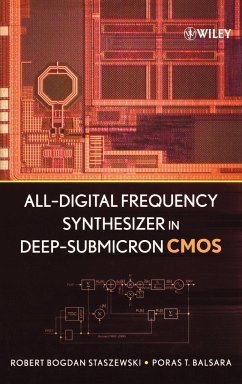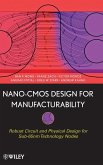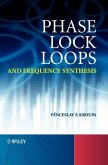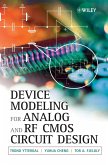All-Digital Frequency Synthesizer in Deep-Submicron CMOS describes techniques for the design and implementation of an all-digital RF synthesizer. The book is a result of a recent investigation conducted to develop a synthesizer architecture that exploits the strong advantages of deep-submicron digital CMOS process technology as well as advances in digital VLSI design. The underlying theme of the techniques presented is to maximize a digitally intensive implementation by operating in a synchronous phase domain. The chief benefit obtained with this architecture is to allow the integration of the RF front-end with the digital back-end onto a single silicon die using a standard ASIC design methodology.
A new and innovative paradigm for RF frequency synthesis and wireless transmitter design
Learn the techniques for designing and implementing an all-digital RF frequency synthesizer. In contrast to traditional RF techniques, this innovative book sets forth digitally intensive design techniques that lead the way to the development of low-cost, low-power, and highly integrated circuits for RF functions in deep submicron CMOS processes. Furthermore, the authors demonstrate how the architecture enables readers to integrate an RF front-end with the digital back-end onto a single silicon die using standard ASIC design flow.
Taking a bottom-up approach that progressively builds skills and knowledge, the book begins with an introduction to basic concepts of frequency synthesis and then guides the reader through an all-digital RF frequency synthesizer design:
_ Chapter 2 presents a digitally controlled oscillator (DCO), which is the foundation of a novel architecture, and introduces a time-domain model used for analysis and VHDL simulation
_ Chapter 3 adds a hierarchical layer of arithmetic abstraction to the DCO that makes it easier to operate algorithmically
_ Chapter 4 builds a phase correction mechanism around the DCO such that the system's frequency drift or wander performance matches that of the stable external frequency reference
_ Chapter 5 presents an application of the all-digital RF synthesizer
_ Chapter 6 describes the behavioral modeling and simulation methodology used in design
The final chapter presents the implementation of a full transmitter and experimental results. The novel ideas presented here have been implemented and proven in two high-volume, commercial single-chip radios developed at Texas Instruments: Bluetooth and GSM.
While the focus of the book is on RF frequency synthesizer design, the techniques can be applied to the design of other digitally assisted analog circuits as well. This book is a must-read for students and engineers who want to learn a new paradigm for RF frequency synthesis and wireless transmitter design using digitally intensive design techniques.
Hinweis: Dieser Artikel kann nur an eine deutsche Lieferadresse ausgeliefert werden.
A new and innovative paradigm for RF frequency synthesis and wireless transmitter design
Learn the techniques for designing and implementing an all-digital RF frequency synthesizer. In contrast to traditional RF techniques, this innovative book sets forth digitally intensive design techniques that lead the way to the development of low-cost, low-power, and highly integrated circuits for RF functions in deep submicron CMOS processes. Furthermore, the authors demonstrate how the architecture enables readers to integrate an RF front-end with the digital back-end onto a single silicon die using standard ASIC design flow.
Taking a bottom-up approach that progressively builds skills and knowledge, the book begins with an introduction to basic concepts of frequency synthesis and then guides the reader through an all-digital RF frequency synthesizer design:
_ Chapter 2 presents a digitally controlled oscillator (DCO), which is the foundation of a novel architecture, and introduces a time-domain model used for analysis and VHDL simulation
_ Chapter 3 adds a hierarchical layer of arithmetic abstraction to the DCO that makes it easier to operate algorithmically
_ Chapter 4 builds a phase correction mechanism around the DCO such that the system's frequency drift or wander performance matches that of the stable external frequency reference
_ Chapter 5 presents an application of the all-digital RF synthesizer
_ Chapter 6 describes the behavioral modeling and simulation methodology used in design
The final chapter presents the implementation of a full transmitter and experimental results. The novel ideas presented here have been implemented and proven in two high-volume, commercial single-chip radios developed at Texas Instruments: Bluetooth and GSM.
While the focus of the book is on RF frequency synthesizer design, the techniques can be applied to the design of other digitally assisted analog circuits as well. This book is a must-read for students and engineers who want to learn a new paradigm for RF frequency synthesis and wireless transmitter design using digitally intensive design techniques.
Hinweis: Dieser Artikel kann nur an eine deutsche Lieferadresse ausgeliefert werden.








